
Salty Sam’s Fun Blog for Children
Number 454
Downing Street
Hello Everyone

The last time l took Bill, Bob and Emily to London to visit Smiley Sid, l took them to see Downing Street.
Many years ago members of the public used to be able to walk up it and take a closer look at the houses there, but now there are tall railings at the end of the street – and usually a crowd of tourists up against them too, so it is very difficult to see anything very clearly.
There are two big beautiful horses with soldiers on top from the Household Cavalry that you are allowed to say hello to and photograph nearby. The word household refers to the royal household and a cavalry is a group of soldiers who ride horses.
You are always seeing inside Downing Street on television though.
There are very often lots of television presenters and photographers gathered along one side of the street reporting on news events regarding the government.
Number 10 Downing Street is the working residence of the Prime Minister.
At the front you will see a very, very shiny, black front door with a white number 10 on it. The zero looks like it hasn’t been put on straight but that was probably done on purpose to look stylish. ![]()
l read once that there are two doors that are swapped over regularly so that they can be repainted frequently and that is why the front door is always so shiny.
There is also a very attractive lamp in the centre of an arch just outside the door and a policeman or two always on guard outside. They are there around the clock.
There is a big Christmas tree put up outside the door every December and children are asked to come along and switch on the lights.
You will also notice that there is no way to open the door from the outside. Somebody on the inside has to let people in.
The house doesn’t look very big at all but it seems to be a bit like Dr Who’s TARDlS because inside it is quite large. The whole block of buildings is very deep. The whole building was extensively refurbished last century to stop it becoming a bit of a wreck!
There is a large staircase inside and along its walls are portraits of all the Prime Ministers who have lived there. At one point in history, they turn from paintings into photographs.
There is a flat at the top of the house where the Prime Minister will live alone or with their husband or wife or partner and children if they have any.
They will often work late into the night and it is useful not to have a long journey home if you don’t finish work until the early hours of the morning.
The Prime Minister is not the head of the country. He or she is called ‘the first among equals’. That means that they are a Member of Parliament like everyone else but have a different job to do.
The first Prime Minister was Robert Walpole and there have been many since then; they can last a few months or a few years. Some of them are more popular than others.
To tell you the story of how the first Prime Minister came to be, l must pick up from the end of the story on Blog Post 453 last week.
When Charles ll came to the throne he had a different relationship with Parliament from his father. He had to; otherwise he would not have been allowed to become monarch.
When the monarchy was restored the country was no longer the republic it had been under Oliver Cromwell and his son Richard.
Charles met with a few important ministers in his private apartment or ‘cabinet’ on a regular basis to have discussions.
Over the next few decades, this group of ministers became in charge of the government and had weekly meetings usually presided over by the monarch.
Three monarchs later (Queen Anne’s reign 1702-1714) this group was actually being referred to as the Cabinet.
The Cabinet was drawn from the political party with the most elected Members of the House of Commons and they elected who should be their leader – and this is what happens today.
Nowadays, the members of the cabinet are chosen by the Prime Minister from anyone in their party who has been elected to the House of Commons.
This is how Robert Walpole became the first Prime Minister…
A problem arose when George l came to the throne. He was German and spoke no English.
He arrived in England in 1714 at the age of 54 not knowing any English or much about England either. He had to rely heavily on his advisers to help him.
Robert Walpole was born in 1676 the son of a Norfolk landowner. He entered Parliament in 1701 for the Whig Party (merged into the Liberal Democrat Party of today).
He was an effective debater and quickly rose in the ranks of the party to become First Lord of the Treasury and Chancellor of the Exchequer in 1715 (he was in charge of the country’s money).
So he became first minister of the King and fulfilled his role of presiding over the Cabinet. He worked from an office in Downing Street. ln those days it was a cul-de-sac (street open at only one end) of late 17th century and early 18th century houses.
Downing Street was named after Sir George Downing who was a 17th century Secretary to the Treasury. The 17th century is the 1600s.
ln the heart of 10 Downing Street is the Cabinet Room where the Cabinet has meetings around a boat-shaped table. lt is this shape because there are so many chairs around it people are able to see and hear each other.
lt used to be oblong.
The Prime Minister has the only chair with arms on it!
The Chancellor of the Exchequer lives at Number 11 Downing Street.
The Prime Minister has weekly meetings with the monarch at Buckingham Palace – as long as they are both in London.
The monarch is a constitutional monarch and does not dictate what the government can or can’t do. Their role is to ‘support and advise’.
lt is very useful for a top politician to be able to speak openly to someone who can be totally trusted and to someone who has had many years of experience of meeting all the other ‘top people’ in the world.
A monarch is trained to take the position from childhood.
lf you like my blog, please support it by telling all your friends and followers about it.
Thank you!
And see you again next Fun Friday!
Love and kisses
Salty Sam

www.christina-sinclair.com


Bill and Bob’s Joke of the Week![]()
![]()
Bill: l’m not in favour of political jokes.
Bob: No, me neither, l’ve seen too many of them get elected.

Salty Sam © Christina Sinclair 2015
Unauthorized use and/or duplication of material from this blog without express and written permission from this blog’s author and owner is strictly prohibited.
Links may be used to www.christina-sinclair.com

Picture Gallery
 Robert Walpole – a good-natured, cheerful and tolerant man
Robert Walpole – a good-natured, cheerful and tolerant man
(1676 – 1745)


 Cars bring cabinet ministers to work
Cars bring cabinet ministers to work
 The front door from the inside
The front door from the inside
 The Cabinet Room
The Cabinet Room
 You may think it looks more splendid on the inside than it does from outside
You may think it looks more splendid on the inside than it does from outside
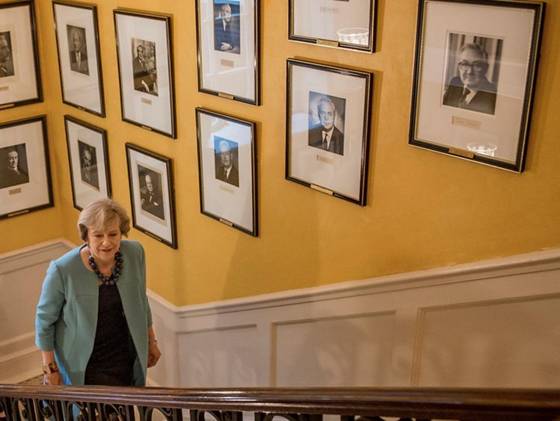 Portraits of Prime Ministers
Portraits of Prime Ministers


 THE SALTY SAM NEWS DESK
THE SALTY SAM NEWS DESK

As you already know, the back of Auntie Alice’s garden disappears into some woods which lie between the river which runs past her cottage, and Farmer Jenkins’ fields.
As someone who loves flowers, she plants them wherever she can.
She planted some cyclamen in the place where garden turns into woods a couple of years ago and she was pleased to see the other day that they were doing really well.
The common name for cyclamen is sow bread.

Cyclamen are sweet, little flowers that look after themselves. You just plant them and leave them to it!
They slowly spread themselves around under the soil.
The flowers you plant in the garden are called hardy cyclamen. They are different from the kind you grow in pots indoors which are called florist’s cyclamen. The word hardy means tough – a plant that is hardy is a plant that can survive through a cold winter.
Cyclamen come in white and also a large range of mauves and light and dark pinks.
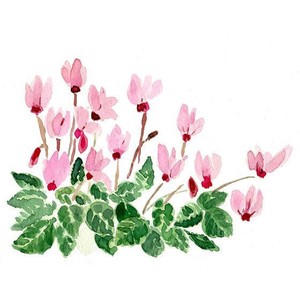
The lovely thing about cyclamen is it grows in places where other plants find it difficult to grow.
It also flowers at a time when there aren’t many other flowers in bloom.
Cyclamen plants can grow in a variety of soils as long as they are well-drained – but not extremely dry either. They do well in acidic soils and grow even under pine trees.
They can grow when the ground is not very deep like in rockeries and around the roots of tree roots.
They like tree leaves falling onto them in the autumn because the leaves help to protect them from frost. The leaves provide a sort of snuggly bed for the cyclamen.
Cyclamen don’t like bright sunshine on them so that is why they do so well in a woodland setting and start to provide little dots of colour between the trees just as winter is on its way or in late winter and early spring.
You can grow them from seed to introduce new varieties into your garden.
Or you can increase your stock by dividing plants up and replanting them further apart just under the soil when the ground is soft and the plant is dormant – that means asleep and not flowering.
It is good to divide them sometimes because they can get too squashed in together.
Don’t plant cyclamen more deeply than 5cm, otherwise, like daffodils, when they are planted too deeply, they may not flower.
If you want to plant seeds, collect them and sow while still fresh.
Soak the seeds overnight and plant in a medium which is half seed compost and half sharp grit. Cover the seeds with a little compost so that they can germinate in the dark.
If you are buying seed, follow the instructions that come with the seeds.
The information on the packet will tell you if the plants will flower from late summer onwards or January onwards.
If they establish well, they will last for years.
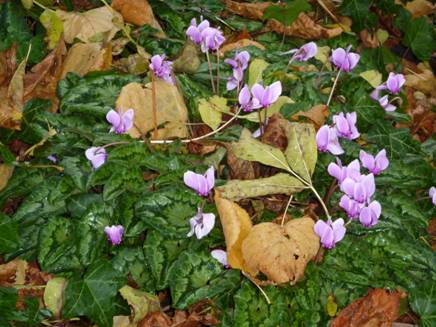

And one last message…

Happy Halloween!


*********************
TO ADVERTISE ON THIS BLOG
PLEASE CONTACT:
christina.sinclair.ads@aol.co.uk
*********************

 Quick Quiz
Quick Quiz
Can you answer these questions?
- Who was the first British Prime Minister?
- Who was thought to be Queen Victoria’s favourite Prime Minister?
- Who was the first female Prime Minister?
- Who was the Prime Minister that gave us the Brexit Vote?
- Who was the Prime Minister at the end of WWll?
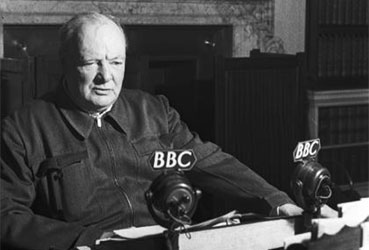
Question 5



lt’s the Weekend!

HOW TO MAKE ADVENT STOCKlNGS
You will need to knit 24 of these little stockings to complete a whole advent calendar.
You can make them all in red and white or mix the colours up a bit by adding green or even yellow and blue.
You could make multi-coloured ones.
You can embroider a number on the side using lazy daisy stitch or embroider each number on a circle of felt using embroidery threads (silks) and then sew the circle – or even square of felt, onto the side of a stocking.
You can put a large loop on the back of each stocking and hang them on your tree or a smaller one and hang thread them up on a cord across the wall along side your cards.
You might be able to hang one up on your bedroom door handle every night and hopefully get a little prezzy in it by morning time. Make sure the loop you put on each stocking is big enough.
The stockings are small but there is enough room to put a sweet inside.
ADVENT STOCKING – RIGHT SIDE (KNIT ONE)
Using 4mm knitting needles and red dk yarn cast on 15 stitches
Knit 8 rows of stocking stitch
Decrease 1 stitch at the beginning of the next row, knit to end
Decrease 1 stitch at the end of the next purl row by knitting 2 stitches together purlwise
Repeat the last two rows once
Knit 10 rows of stocking stitch
Change to white dk yarn
Knit 6 rows of garter stitch
Cast off
ADVENT STOCKING –LEFT SIDE (KNIT ONE)
Using 4mm knitting needles and red dk yarn cast on 15 stitches
Knit 8 rows of stocking stitch
Decrease 1 stitch at the end of the next knit row by knitting 2 stitches together
Decrease 1 stitch at the beginning of the next purl row
Repeat the last two rows once
Knit 10 rows of stocking stitch
Change to white dk yarn
Knit 6 rows of garter stitch
Cast off
TO MAKE UP
Using over-sew stitching and with right sides together sew side seams using appropriate colours
Secure a loop into the top of the back of the stocking
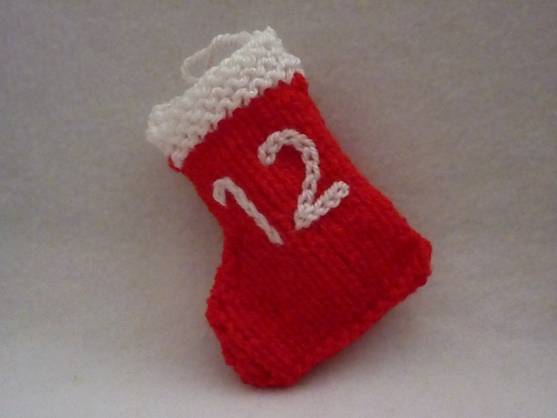
Please note that the material on this blog is for personal use and for use in classrooms only.
It is a copyright infringement and, therefore, illegal under international law to sell items made with these patterns.
Use of the toys and projects is at your own risk.
©Christina Sinclair Designs 2015


Quick Quiz Answers
- Who was the first British Prime Minister? – Sir Robert Walpole
- Who was thought to be Queen Victoria’s favourite Prime Minister? – Benjamin Disraeli
- Who was the first female Prime Minister? – Margaret Thatcher
- Who was the Prime Minister that gave us the Brexit Vote? – David Cameron
- Who was the Prime Minister at the end of WWll? – Winston Churchill

Baroness Thatcher

Embroidery Stitches



